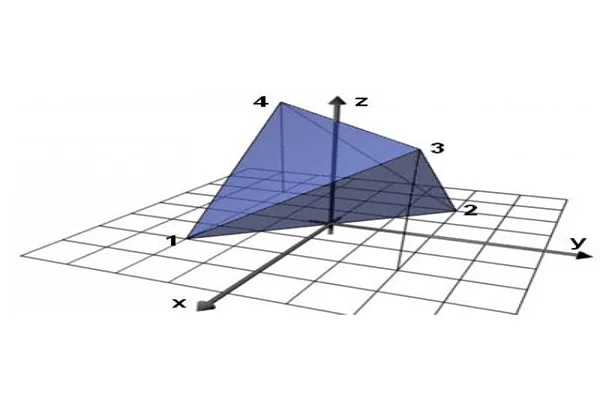What are BREP and CSG | Difference between BREP and CSG
- Home
- Blog Details

- September 4 2019
- admin
The geometric modeling technique has revolutionized the design and manufacture of products to a great extent. Although there have been various ways of representing an object, the most commonly used modeling technique is Solid Modelling. Boundary Representation modeling and Constructive Solid Geometry modeling are the two main ways to express solid models.
Constructive Solid Geometry
Constructive solid geometry or C-REP/CREP, previously known as computational binary solid geometry, is a reliable modeling technique that allows the creation of a complex object from simple primitives using Boolean operations. It is based on the fundamental that a physical object can be divided into a set of primitives or basic elements combined in a particular order by following a set of rules (Boolean operations) to create an object. Typically, they are objects of simple shapes such as cuboids, cylinders, prisms, pyramids, spheres, and cones. CSG cannot represent fillets, chamfers, and other context-based features.
The primitives are considered valid CSG models, where each primitive is bounded by orientable surfaces (Half-spaces).
These simple primitives are in generic form and must be confirmed by the user to be used in the design. The primitive may require scaling, translation, and rotation transformations to be assigned a coveted position.
There are two kinds of CSG schemes:
Primitive-based CSG: A popular CSG scheme based on bounded solid primitives, R-sets.
Half-space-based CSG: This CSG scheme uses unbounded Half-spaces. Bounded solid primitives and their boundaries are considered composite half-spaces and the surfaces of the component half- spaces, respectively.
Some attributes of CSG are as follows:
- CSG fundamentally differs from the BREP model, which does not store faces, edges, or vertices. Instead, it evaluates them as needed by algorithms.
- CSG database stores topology and geometry.
- The validity checking in the CSG scheme occurs indirectly. Each primitive combined using a Boolean operation (r-sets) to build the CSG model fits its validity.
- The standard data structures used in CSG are graphs and trees.
- CSG representation is of considerable importance to manufacturing.
Boundary Representation
In solid modeling and computer-aided design, boundary representation or B-rep / BREP—is the process of representing shapes using the limits. Here a solid is described as a collection of connected surface elements. BREP was one of the first computer-generated representations to represent three- dimensional objects.
BREP defines an object by its spatial boundaries. It details the points, edges, and surfaces of a volume.
BREP can also be explained in terms of cell domain combination.
A cell is a connected limitation of the underlying geometry. There are four kinds of cells as per the spatial dimension they inhabit:
- Vertex
- Edge
- Face
- Volume
A domain is a set of connected cells grouped to define boundaries. Fields define various components inside a non-manifold object.
Boundary representation of models consists of two kinds of information:
Topology: The main topological entities are faces, edges, and vertices.
Geometry: The main geometrical entities are surfaces, curves, and points. The topological and geometrical entities are intertwined in a way where:
- The face is a bounded portion of a character.
- An edge is an enclosed piece of a curve.
- A vertex lies at a point. Topological items allow making links between geometrical entities.
BREP comes with its share of advantages and disadvantages, which are:
- It is appropriate for constructing solid models of unusual shapes.
- A BREP model is relatively simple to convert to the wireframe model.
- BREP uses only primitive objects and Boolean operations to combine them, unlike CSG (Constructive Solid Geometry).
- In addition to the Boolean operations, B-rep has extrusion (or sweeping), chamfer, blending, drafting, shelling, tweaking, and other actions that use these.
- BREP is not suitable for applications like tool path generation.
Differences between BREP and CSG
| Boundary Representation(BREP) | Constructive Solid Geometry(CSG) |
| BREP describes only the oriented surface of a solid as a data structure composed of vertices, edges, and faces. | A solid is represented as a Boolean expression of primitive solid objects of a simpler structure. |
| A BREP object is easily rendered on a graphic display system. | A CSG object is always valid because its surface is closed and orientable and encloses a volume, provided the primitives are authentic in it. |
| Basic operations include reviewing the possible surface types, the winged-edge representation schema, and the Euler operators for BREP. | Basic operations include classifying points, curves, and surfaces concerning a solid, detecting redundancies in the representation, and approximating CSG objects systematically. |
- adminhttps://www.pre-scient.com/author/webwideit/
- adminhttps://www.pre-scient.com/author/webwideit/
- adminhttps://www.pre-scient.com/author/webwideit/
- adminhttps://www.pre-scient.com/author/webwideit/

